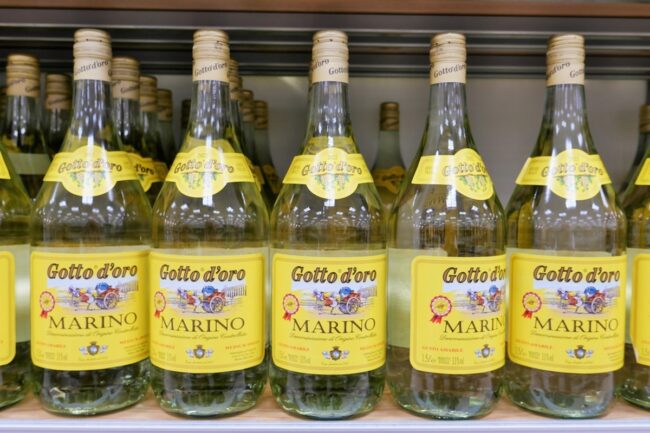Unique Galliano Substitute Ideas
When Galliano is not available, substitutes provide the special flavors needed for cocktails and cooking.
These alternatives copy the sweet, herbal notes, making them perfect for many recipes.
Trying these options keeps your creations tasty and consistent, even without the original liqueur.
Galliano’s Unique Flavor Profile
Galliano, a liqueur with a unique blend of flavors, stands out for its sweet vanilla essence.
This sweetness comes from vanillin and is balanced by sugar, creating an enjoyable taste experience.
An intriguing hint of anise introduces a distinct licorice note that sets it apart from other spirits.
The herbal foundation is crafted using various spices and herbs; cinnamon adds warmth while citrus infuses brightness into the mix.
Finding alternatives becomes simpler when looking for options that combine sweet notes with herbal complexities similar to Galliano's rich profile.
Ideal Substitutes for Galliano
Trying to whip up a cocktail without Galliano can feel tricky, but plenty of alternatives exist.
Sambuca stands out with its rich anise flavor and smooth texture, making it easy to use in various recipes.
Anisette also works well; its sweetness may adjust the drink's overall flavor, so keep that in mind.
For those who enjoy herbal notes, yellow Chartreuse introduces a complex blend of plants that can add depth to your cocktails.
Non-alcoholic options like infused star anise syrup offer a creative twist while delivering similar flavors when you want to skip the alcohol entirely.
Common Culinary Uses of Galliano
Galliano, with its sweet and aromatic essence, adds a distinctive flair to both cocktails and culinary creations.
Known for its role in the iconic Harvey Wallbanger, this Italian liqueur brightens up drinks with its vibrant flavor.
Beyond beverages, Galliano can enhance desserts like tiramisu or elevate pastries and cakes by introducing an unexpected twist of sweetness.
Savory dishes benefit too; marinating meats such as chicken or turkey infuses them with a rich depth that makes meals memorable.
As an aperitif or digestif, Galliano not only delights the palate but also aids digestion.
Choosing the Right Galliano Substitute
Finding a substitute for Galliano requires some thought due to its distinctive flavor.
The sweet richness, highlighted by vanilla, anise, and licorice notes sets it apart.
Consider trying anise-based liqueurs like Sambuca or Ouzo; their flavors closely align with what Galliano offers.
Mixing vanilla extract with anise or licorice can also mimic that beloved taste while allowing you to adjust sweetness levels as needed.
Balancing these elements is key; too much of one can overshadow the others, so experiment until you achieve that desired harmony in your concoction.
Best Anise-Flavored Substitutes
Anise offers a unique flavor profile that enhances various alcoholic beverages, making it a staple in many cultures.
Aniseed and its seeds can effortlessly replace Galliano, providing an intense licorice taste to your creations.
Fennel serves as another alternative with its milder sweetness, lending a gentle touch to liqueurs when infused properly.
Star anise brings its distinctively strong flavor into the mix, ideal for those seeking something robust and aromatic in their drinks.
For those looking for ready-made options, Ouzo or Raki from Greece and Turkey respectively present excellent choices that maintain the essence of anise while adding their cultural flair to cocktails or sipping experiences.
Exploring Herbal and Sweet Swaps
Searching for a suitable replacement for Galliano can be an exciting adventure in flavor.
Yellow Chartreuse stands out with its herbal sweetness, crafted by French monks using a secret blend of various botanicals.
Cinnamon and saffron add warmth and depth, enhancing drinks without overwhelming them.
For that distinct licorice note reminiscent of Galliano, licorice extract serves as an effective choice but should be used carefully to maintain balance.
Lavender or musk yarrow introduces floral aromas that elevate your cocktails, while samnite mint and Italian Apennine juniper bring a robust herbal quality to the mix; experimenting with these ingredients opens up delightful new flavor combinations just waiting to be discovered.
Adjusting Recipes for Substitutes
Finding a suitable alternative to Galliano in your cooking can open up new culinary possibilities.
Sambuca or anise liqueur works well for sauces and marinades, though their sweetness might require some adjustments in sugar levels.
In baking, blending vanilla extract with a hint of anise offers a way to replicate Galliano's distinct taste without overwhelming the dish.
Yellow Chartreuse shines in desserts, bringing its herbal complexity into play; just remember to tweak the amounts based on your desired flavor intensity.
For savory meals like chicken dishes, combining brandy or cognac with anise liqueur captures that essence beautifully while allowing room for personal touches along the way.
Galliano’s Role in Cocktails
Galliano offers a vibrant twist to any cocktail, standing out with its striking yellow hue and herbal undertones.
The Harvey Wallbanger combines vodka and orange juice, topped with a splash of Galliano for an invigorating experience.
As an aperitif, this liqueur serves as a perfect prelude to meals by awakening the senses.
After dining, savoring it as a digestif brings comfort while aiding digestion.
Try mixing up the Golden Cadillac or Yellow Bird for delightful variations that highlight Galliano's versatility in both classic and tropical cocktails.
Final Thoughts
Finding an alternative to Galliano can feel daunting, especially with its unique flavor.
Licor 43 stands out with its sweet and herbal notes, closely mirroring Galliano’s profile.
Anisette introduces a pleasant anise essence that complements many recipes beautifully.
Strega offers complexity and depth, making it a fascinating choice for those wanting something different in their cocktails.
Experimentation opens up exciting avenues; mixing these substitutes might lead to discovering your new favorite taste sensation in drinks or dishes you create at home.

